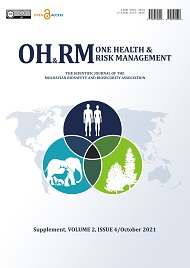Аннотация
Introduction. Education and training, free time and the rest of children and adolescents in the current conditions are impossible without new information technologies, primarily computer technologies. The computer is a means, which provides feedback in the learning process, individualizing the learning process, allows searching for information from a large number of sources, modelling the processes or phenomena studied, organizing collective work and in groups. Parallel with the advantages of using computers in the instructional-educational process, they also have a negative influence on the body if they are not used correctly. Research shows that in the computer training process is registered fatigue, emotional disorders, posture disorders, severe neuromascular disorders, osteoarticular, cardiovascular disorders, carpal tunnel syndrome, computer vision sindrom, computer is an important risk factor for obesity.
Material and methods. A cross-sectional epidemiological research was initiated. The research was conducted on 123 students, including 52 boys and 71 girls. Pulse (beats/min.) and blood pressure (mm Hg) measurements were made in 10 classes (grades 5-9) at the beginning and end of the computer lesson. Using the obtained data, the following indices were calculated: pulsatile voltage (mm Hg), average dynamic voltage (mm Hg), systolic volume (mL), Minute-heart volume (L/ min.). The students, together with the computer science teacher, signed an agreement to take the measurements.
Results. The pulse rate in the studied group of students at the beginning of the computer lesson, constituted values between 70 and 86 beats/min., with an average value of 77.6±3.1 beats/min., and at the end of the lesson it decreased, constituting values between 66 and 83 beats/min., with an average value of 75.8±3.7 beats/min. (p<0.01).
At the beginning of the lesson the systolic blood pressure was 104-109 mm Hg (109.6±3.3 mm Hg), at the end of the lesson to most students the blood pressure slightly decreased, registering a value between 96 and 118 mm Hg, (105.5±4.7 mm Hg) (p<0.001). Diastolic blood pressure was 73-89 mm Hg (78.1±3.9 mm Hg.) at the beginning, and 71 and 85 mm Hg (75.7±4.0 mm Hg) at the end of the lesson (p<0.001).
The values of cardiohemodynamic indices during the computer lesson between boys and girls decrease more pronounced in boys, except for the minute-cardiac volume which is identical in boys and girls.
The changes of the registered cardiohemodynamic indices induce the tension of the body's systems and as a result – the development of fatigue. Quantitative and qualitative changes in heart rate are manifested less by the state of the myocardium and more pronounced by the general reaction of the body, by the particularities of the connections between systems, made in the dynamics of concrete physiological processes. At the same time, the data of the literature indicate that the decrease of the integral characteristics of the heart rhythm and the hemodynamic indices represent the manifestation of the restructuring and consolidation of the forces, determined by the emotional tension to a greater extent.
Conclusions. The decrease in the values of most circulatory system indices at the end of the computer lesson is recorded in more than half of the students and shows the predominance of parasympathetic regulation of the vegetative nervous system, therefore it speaks of an advanced degree of fatigue.
|
 Просмотры: 216|
|
Просмотры: 216|
|
Это произведение доступно по лицензии Creative Commons «Attribution» («Атрибуция») 4.0 Всемирная.
Copyright (c) 2021 Ibrahim Khaled BANI RABIA

